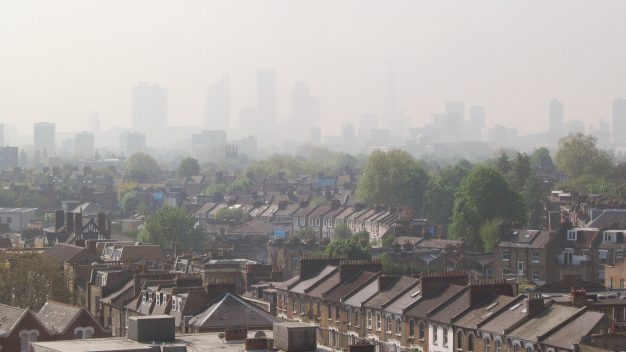
Children in polluted cities ‘more likely to suffer from obesity’
Children living in air pollution-plagued cities with high population density, ‘unwalkable’ infrastructure and who have parents who smoke are more likely to become obese, say US researchers.
Scientists at the University of Southern California (USC) and the Barcelona Institute for Global Health (ISGlobal) are the first to comprehensively profile environmental factors linked to childhood obesity. Their research showed that a higher body mass index (BMI), an estimate of body fat, during childhood is associated with exposure to smoking — both in the womb and while growing up — as well as air pollution and certain characteristics seen in some urban areas.
Air pollution and built environment
Researchers reviewed 77 factors during pregnancy and 96 during childhood and found that air pollution, smoking and a person’s built environment may play a role in obesity in children from birth to age 11. Prior to this, researchers have studied single exposures individually but have not analyzed the entire exposome – a comprehensive characterization of all exposures.
The new study, which forms a part of the HELIX project and was published in Environmental Health Perspectives, used data on more than 1,300 children aged 6 to 11 years from birth cohort studies in six European countries: France, Greece, Lithuania, Norway, Spain and the United Kingdom.
We try to understand environmental exposures
Of the children studied, 29 per cent were either overweight or obese. That figure, say the research team, is likely to have risen since the Covid-19 stay-at-home orders. Leda Chatzi, associate professor of preventive medicine at Keck School of Medicine of USC and senior author of the study: “They are exposed to multiple chemicals. With that in mind, we try to understand the totality of environmental exposures. People are not exposed to only one chemical during their lives.”
High levels of nitrogen dioxide inside and outside the home alongside particulate matter between PM2.5 and PM10, which is produced by cars and burning fossil fuels, were linked to growing waistlines. Those going to school in densely populated areas with few services and facilities, were also more at risk, regardless of their socio-economic status.
Martine Vrijheid, co-author of the study, said: “This is one of the first studies that actually manages to measure so many different variables and so many factors of the environment and then tries to analyze them all together. We thought it’s also important to have this type of approach where you show all the results in one publication because it’s the most systematic way of showing the data.”
Obesity and unwalkable cities
“The children who live in densely populated areas and go to schools in areas with few services and facilities were more likely to be obese,” added Leda Chatzi, The relationship between obesity and the characteristics of the built environment, she added, ‘is in line with the findings of previous research and could be explained by a lack of opportunities for children to walk or engage in other outdoor physical activities’.
“These findings provide further evidence that modifying environmental exposures early in life can limit the risk of obesity and associated complications,” said Martine Vrijheid. “The implications for public health are important since these results may help to identify obesity-related exposures that could be targeted for prevention and intervention early in life.”




